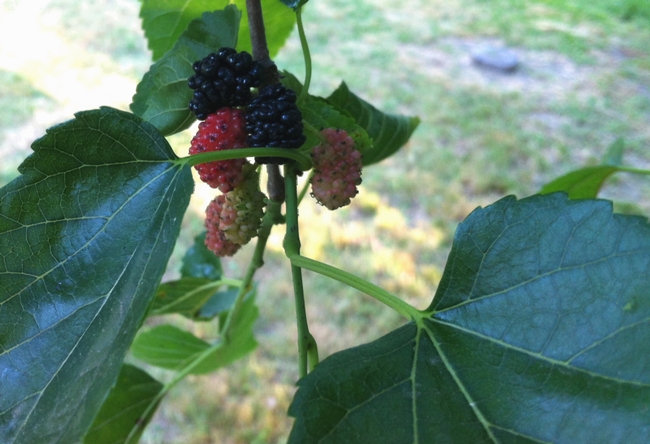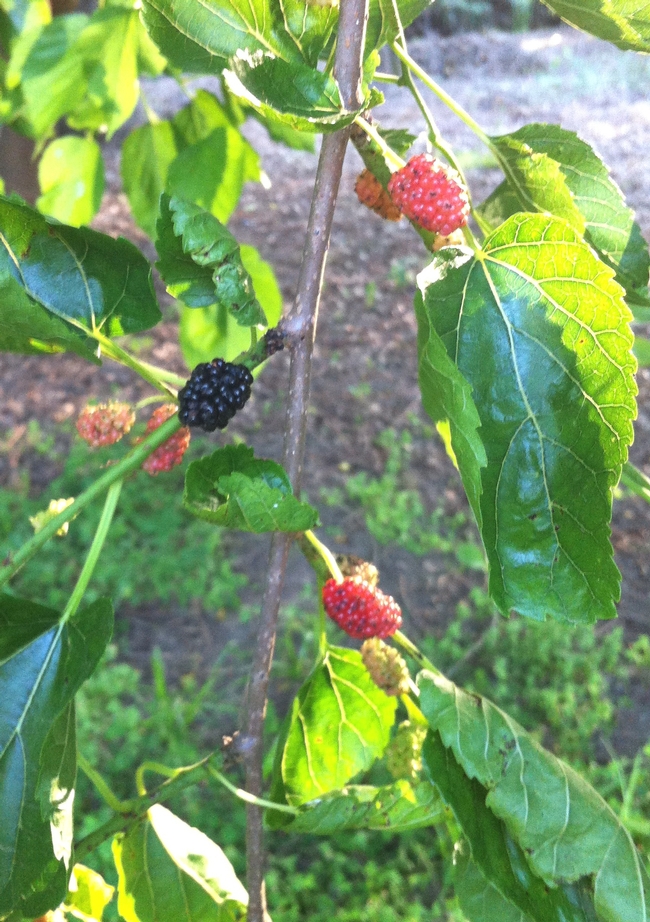Mystery Tree-Learning about an American Classic
My friends recently moved to a beautiful new country home, which sits on an acre of land with a creek. While walking in their yard, they pointed to a large tree about 25-30 feet tall and full of what looked like blackberries hanging from the tree. I’d never seen a tree full of blackberries. I looked expecting to see thorns and vines twisting among the branches but they were actually growing from the tree. My friend explained that the wild turkeys come and jump up to eat the berries, so they didn’t think the berries were poisonous. I took a few pictures and started my search…
It turns out that my friends have several mulberry trees in their yard. I’d often heard of fruitless mulberry trees, but I had never seen one with fruit. I discovered there are 150 different varieties of mulberry trees (Morus spp.) and many, many hybrids. The Red mulberry or American mulberry (M. rubra) is native in the eastern United States. The White mulberry (Morus alba) trees were originally imported from Asia during early colonial times because they are used to raise silk worms.
The mulberry tree is deciduous and often grown near the edge of open woodlands and near fresh water, which described the location on their property perfectly. The fruit is edible and is used for pies and jams because of its sweet and slightly tart flavor. The color of the actual fruit, does not determine the variety. The fruit can be white, pink, red and black but the fruit is really not a berry. It’s an aggregate fruit, which means it’s composed of lots of little berries stuck together, each with its own seed. The fruit is long and shaped similar to a blackberry, but hangs from a short, slender fruit stalk. The fruit is supposed to be delicious however; the color from the fruit is used as dyes so can easily stains things that the juices seeps into. That also including the droppings from birds when eat the berry, so the tree has a bad reputation among suburban homeowners.
After looking at the shape of the leaves, I believe that my friends have the Black mulberry (Morus nigra ) species that is native to southwestern Asia. It’s a beautiful full size tree in their large backyard. It’s in a great location. I think they will be gathering lots of delicious black mulberries for many years to come.
Here we go round the mulberry bush, the mulberry bush, the mulberry bush…here we go around the mulberry bush so early in the morning…
Sources:
http://www.crfg.org/pubs/ff/mulberry.html
http://en.wikipedia.org/wiki/Morus_nigra
http://www.pfaf.org/user/plant.aspx?latinname=Morus+nigra
http://www.ehow.com/how_5637978_make-mulberry-trees-produce-fruit.html

Mulberry fruit. (photos by Esther Blanco)

More fruit and leaves.


Posted by Julie Majewski on June 7, 2012 at 8:09 PM